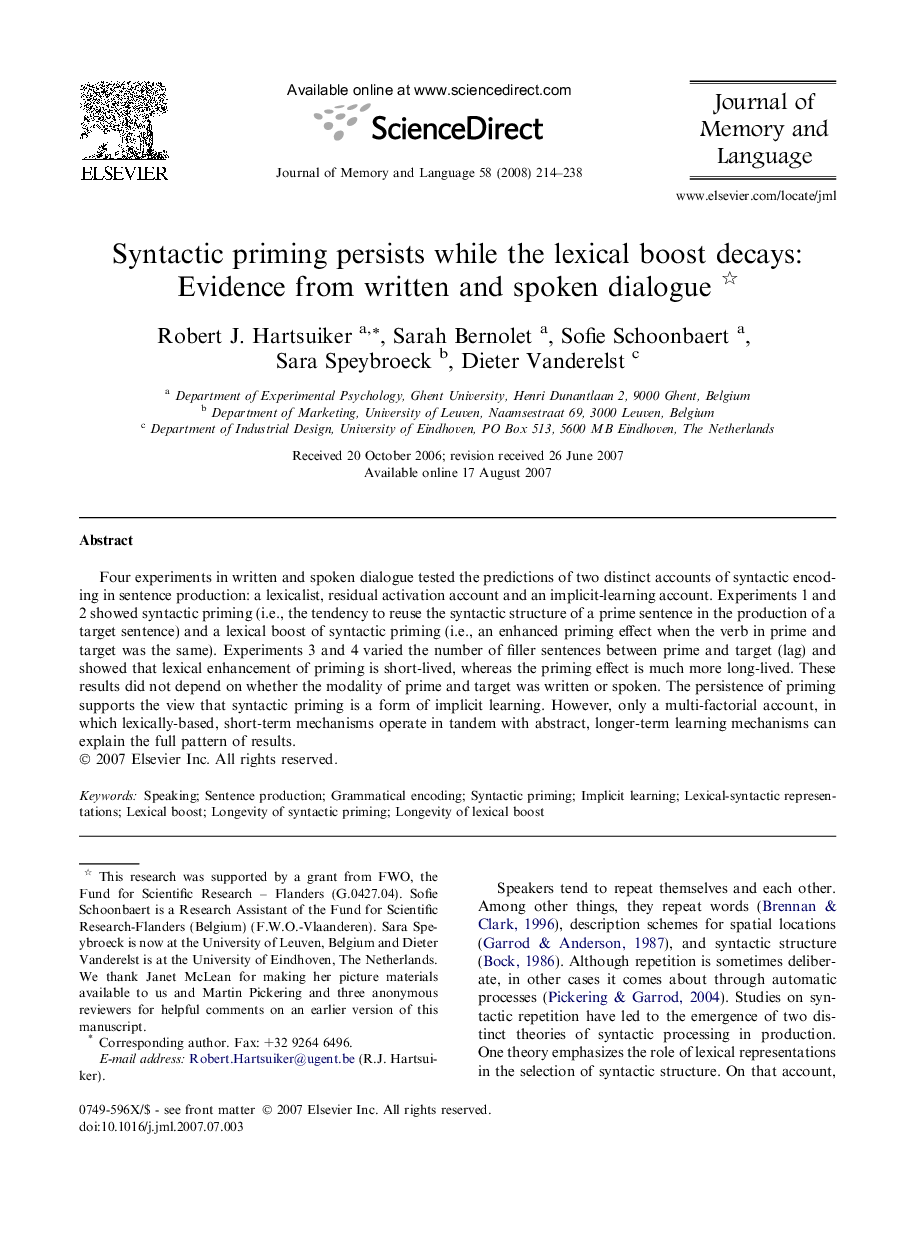| Article ID | Journal | Published Year | Pages | File Type |
|---|---|---|---|---|
| 932270 | Journal of Memory and Language | 2008 | 25 Pages |
Four experiments in written and spoken dialogue tested the predictions of two distinct accounts of syntactic encoding in sentence production: a lexicalist, residual activation account and an implicit-learning account. Experiments 1 and 2 showed syntactic priming (i.e., the tendency to reuse the syntactic structure of a prime sentence in the production of a target sentence) and a lexical boost of syntactic priming (i.e., an enhanced priming effect when the verb in prime and target was the same). Experiments 3 and 4 varied the number of filler sentences between prime and target (lag) and showed that lexical enhancement of priming is short-lived, whereas the priming effect is much more long-lived. These results did not depend on whether the modality of prime and target was written or spoken. The persistence of priming supports the view that syntactic priming is a form of implicit learning. However, only a multi-factorial account, in which lexically-based, short-term mechanisms operate in tandem with abstract, longer-term learning mechanisms can explain the full pattern of results.
